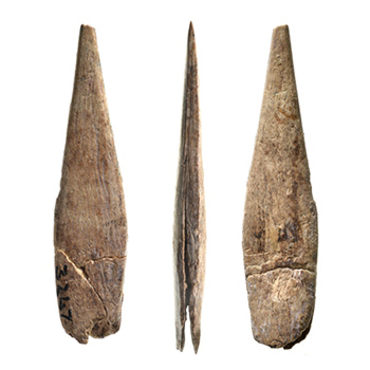
- Home
- Discover the cave
- The Aurignacians
From 43 000 to 35 000 years ago
The Aurignacians were Homo sapiens; anatomically modern people who, like all of our current population, had the capacity to adapt and integrate into a wide range of geographical and chronological areas. Their arrival in Europe prior to 40,000 BP meant that they coexisted for some time with Neanderthals, particularly in the south-east of Europe. As far as we currently know, only Homo sapiens were involved in the Aurignacian culture and the behaviours which are associated with it.
A European culture
The Aurignacian culture developed in Europe and the Near East over a long period. It has been subdivided, and the earliest phases have their origins in cultures which seem to provide a transition between the worlds of the Neanderthal and Homo sapiens. The Aurignacian in its broadest sense thus extends from the Near East to the westernmost part of Russia and covers the whole of central Europe to Spain and Portugal.
The Aurignacian is represented in material terms by the production of tools developed from blades and points, with highly specific bone tool techniques associated with the development of a wide range of symbolic expression: personal ornamentation, portable and cave art.
The chronology of this vast cultural phase, perceptible on a European scale, extends from 43,000 to 35,000 years BP. The first cultures of the Gravettian belong to this latter period.
Partners and authors
Associated media
Open Media Library

Aurignac prehistoric shelter

Entrance to the Aurignac shelter

Aurignacian spearhead

Antler Smoother from Aurignac

Retouched flint blades from Aurignac

30 - Jean Clottes - Learning about Aurignacian art

64 - Bernard Gely - the "Aurignacian" people

66 - Jean-Michel Geneste - Aurignacian people

67 - Jean-Michel Geneste - Aurignacian material culture
